| The day after I got back home from Greece, I was out on a long walk on a dirt road in Northern California (poor me, haha), and got preoccupied with how much my shoulder blades were moving as my arms swung, and how I couldn't really be sure what my own bones were doing unless I was monitoring the area with my own hand. (You do need to cultivate a certain amount of self-absorption for this kind of learning!) * |
So I was trying to swing my humeri while stabilizing the scapulae, because I was chasing that delicious feeling you get when long-dormant muscle fibers wake up, look around and grin with delight. "Look! I'm finally aligned and breathing! Yay!" say the long-neglected muscle fibers. You know that feeling, right? (I'm not kidding here: I do own the url ALIGNMENTBLISS.COM, though I haven't utilized it. Yet.)
Small digression before I tell you about the little shoulder thrill move:
When we are walking, our legs should be pushing back to propel us forward (see Jillian Nicol's very funny blog post). So should our arms (on the opposite side). Our forward propulsion power should come from hip extension (leg going back), and our reciprocal arm swing effort should come from shoulder extension, with hip and shoulder flexion (the forward swing) coming mostly from momentum. What most of us chair-sitters tend to do is to lift the forward leg or arm (effort on the flexion), and then just kind of let the hind limb trail back until it's time to lift it forward again. Lots more on that later, or in the meantime you could browse hip extension gait alignment bowman…
```````````````````````````````````````````````````````````````````````````````
```````````````````````````````````````````````````````````````````````````````
it's best to just stand (weight in heels, neutral pelvis and ribs) and try this:
| | 1) Reach across your back with your left hand and touch your opposite (right) shoulder blade, i.e. scapula. 2) Move your right arm backwards and forwards, feeling the medial edge or corner of your scapula bone as you allow it to move forward and back. 3) Then bring your right shoulder forward to move |
4) Now keep your scapula wide and flattened, and slowly swing your right arm back without letting the scapula move. Be very mindful (that means notice what you're doing) and strict (but nice) with yourself. For now it is a slow and very small movement. (At least, on me it is!)
Do it on both sides, of course.
BONUS with the arm-behind-the-back method: the left shoulder is getting the beginnings of a really helpful stretch at the same time as you're working on the right shoulder. I worked on this consistently for a half-hour or so switching back and forth, and I felt amazing the next day. Try it!
In the meantime, here's another method to monitor what your shoulder blade is up to:
** So? We do what we need to do to get the job done, right? There is a problem with these tactics, though. When we skip over a whole joint in order to attain a motion, and we do that hundreds of times a day for hundreds and thousands of days, the tissues around that joint will die from lack of blood flow (= oxygen) and that joint will eventually have big problems, and so will the others areas that are compensating (neck, upper and lower back for instance).
===============================================================================

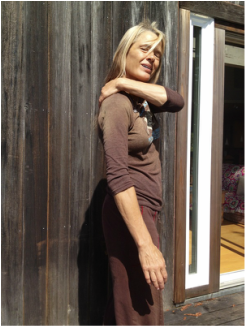


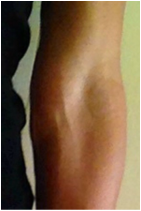
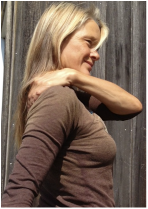
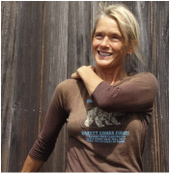
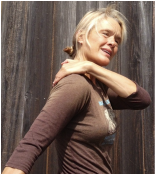
 RSS Feed
RSS Feed